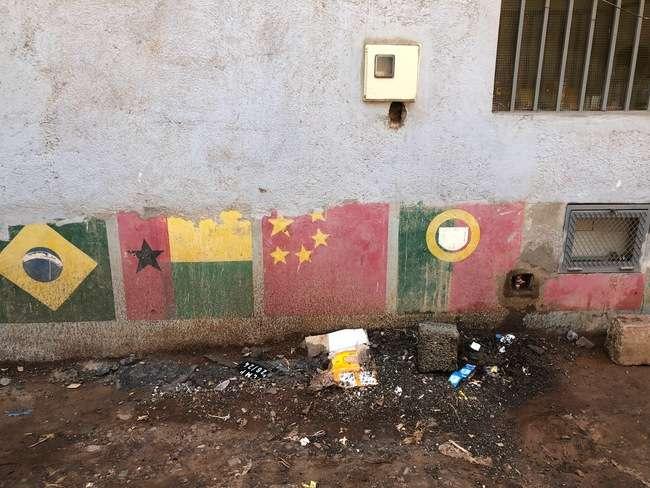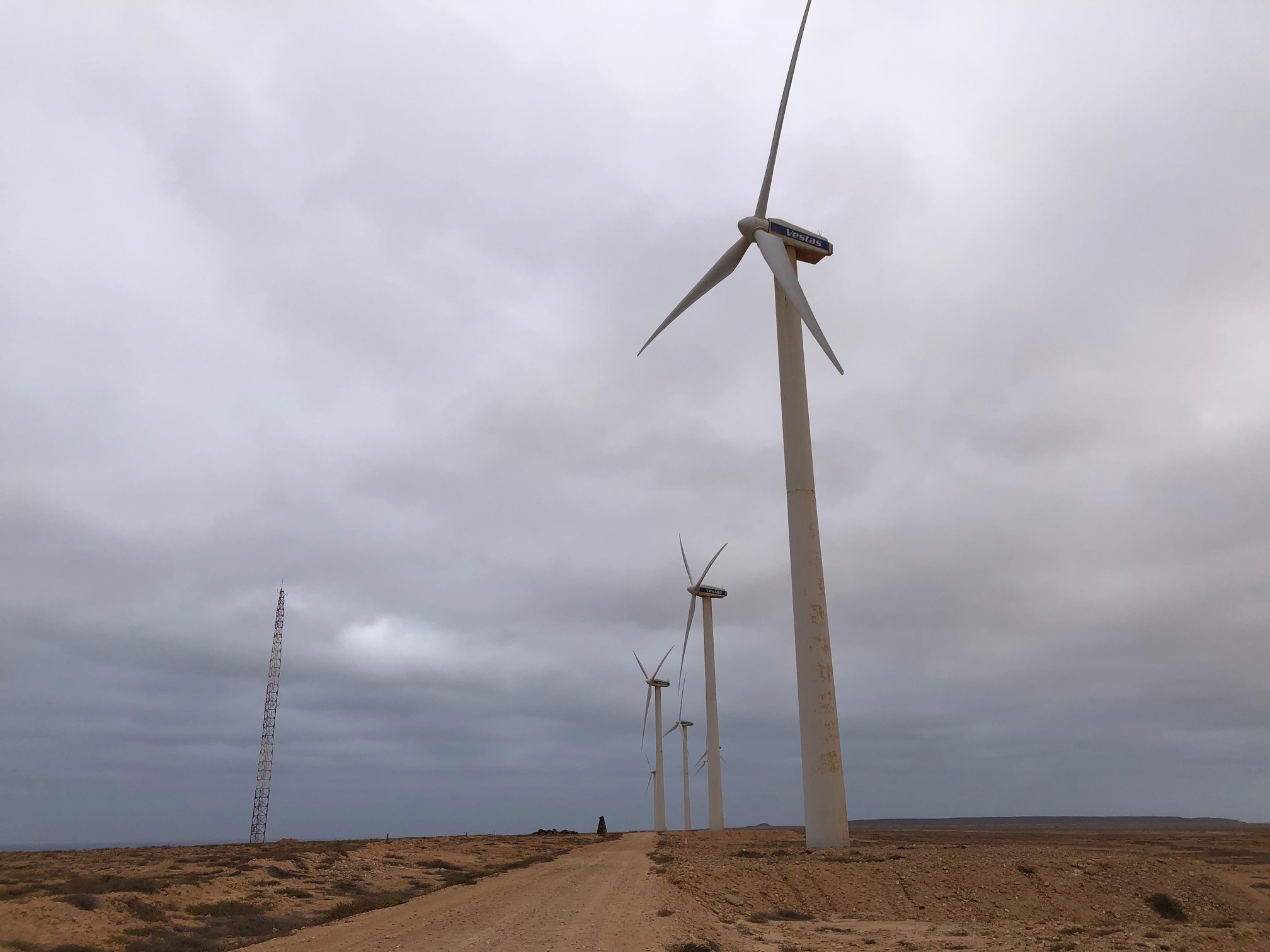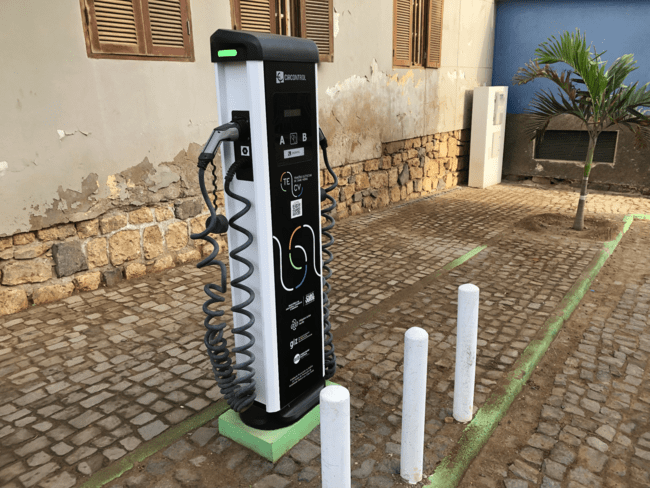After the Forum on China-Africa Cooperation (FOCAC) summit in Beijing last week, China has announced a $28 million donation to Cabo Verde, the African island country 570 kilometers (350 mi) off the western coast of the African continent in Senegal. What is behind China’s strategy in Cabo Verde, and what does it signal for China’s broader Africa strategy – and the ramifications for the West?
A Friendly History
Since the early 2010s, China has increasingly turned its eye toward Cabo Verde, a country smaller than any one of mainland China’s provinces with a population of under 600,000. Cabo Verde, a historic transit point of the trans-Atlantic slave trade, is unique as a small island state that imports most of its products from abroad due to a lack of domestic manufacturing.
Previous contacts focused on military financing and infrastructural projects, with China building hospitals and schools, reconstructing government buildings and constructing a new university campus, the University of Cabo Verde for $70 million.
In 2003, there was also the hope of creating a “Sino-Atlantic Bank” attached to a casino resort. The bank was supposed to contribute to the development of the financial system of Cabo Verde, as well as serve as a connecting point to other Portuguese-speaking countries, which China tried to leverage via the Macau Forum. Macau investor David Chau spearheaded this building on the Island of Santiago next to the international logistics port of Praia, yet construction was scrapped due to transparency concerns.
Other Cabo Verde-China collaborations include housing projects like the $2.7 million Special Maritime Economic Zone in São Vicente, a port city in the north of the archipelago, and agricultural exchanges.
Independently of the government, Chinese entrepreneurship has impacted people’s daily consumption patterns. Popular lojas – corner shops – sell more affordable goods than shops that import from Europe. The lojas are often discussed among Cabo Verdians, some of whom celebrate the lower prices while others are angry at the low pay for employees. The different perspectives reflect generally divided attitudes toward the Chinese presence in general, which is seen as either “friendly and helpful” or “antagonistic.”

Energy and Digital Cooperation
Today, China’s approach to Cabo Verde has shifted increasingly toward ecological investment, as well as energy and digital infrastructure. This trend is also evident in China’s overall Africa strategy. According to official statements, China and Cabo Verde’s interests are fundamentally “aligned” in these areas. Cabo Verde has declared its goal of using 100 percent sustainable energy by 2030 and said it needs China’s help to achieve long-awaited targets in renewable energy power generation, universal electrification, and energy storage solutions.
Cabo Verde lacks domestic production in most areas, from energy to agricultural products. The country imports most of its electricity in the form of petroleum from outside sources. Its electricity prices are among the highest in the world, and access in rural areas remains below the national average of 83 percent. This, especially in the capital Praia, frequently leads to job abandonment, deaths from electrocution during attempts to install electricity illegally, and electricity theft and fraud, with a reported 3,000 cases in the first six months of 2024 (even implicating government officials).
Yet the archipelago, with sunshine year round and access to the sea, boasts a huge capacity for renewable energy development, even in remote mountainous villages.

A Cabeolica wind farm in Sal, Cabo Verde. Photo by Melanie Shi.
A recent public project in wind energy attempting to harness this potential can be seen in the Cabeólica farms project, with wind farms in Santiago (9.35 MW), São Vicente (5.95 MW), Sal (7.65 MW) and Boa Vista (2.55 MW), which came from Denmark but were installed by Chinese contractors, as well as mainly solar photovoltaic (PV) infrastructure. Other initiatives include the China Africa Development Fund (CADFUND) which also seeks to mitigate strains on energy consumption and potable water.
A Hexing electric meter over Electra energy supplier on the main road in Santa Maria, Sal. Photo by Melanie Shi.
For homeowners, state-owned electricity company Electra partners with Chinese supplier Hexing, whose African branch has headquarters in Senegal and Kenya. Hexing has a contract for the installation of electricity meters to provide readings for the highly inefficient energy system, which has often been accused of false readings. Other, smaller Cabe Verdean companies like Hidro Energy and CVORM Energy signed deals in Macau in 2024 to purchase 90 percent of their equipment from China.
There have been other attempts to harness wind, solar, wave, and geothermal power. The Chinese-backed maritime economic zone in São Vicente offers tax reductions and fiscal incentives to companies that present renewable energy solutions using locally sustainable techniques. Another SEZ on the volcanic island Fogo focuses on “volcano research,” including the possibility of harnessing geothermal energy.
Meanwhile, China-funded projects in the hydraulic sector facilitate local access to water, including a dam connecting to a power plant on the island of Santo Antao and another $4.5 million project in Santiago.
Competition With the EU
While Cabo Verde is commonly considered among the most “democratic” and European Union-oriented of West African nations, Chinese funding signals the rivalry between China and the EU for a role in the archipelago – particularly to help Cabo Verde develop its own energy production capacities and be the biggest partner in development.
Whereas the EU owns and operates “strategic transport” out of the port of Maio, China headquarters similar operations in São Vicente. The Huawei SHARE cable installed between Senegal and Cabo Verde rivals the European cable Ella link, which similarly runs between Senegal to the European continent. Despite Europe’s attempt to construct a digital network, CVTelecom, China’s safe city systems and Huawei are behind most of the infrastructure, via the widespread installation of the “safe city” (Cidade Segura) monitoring system in major metropolises, which after FOCAC will continue in its third phase. Chinese firms have also worked on Cabo Verde’s national data center, data transmission network, eGovernment construction, public transportation, and airport technology.
In the digital sector, China is far ahead; Beijing has pledged investment in Praia’s Technology Park, a hub for startups, digital innovation, and data aimed to put Cabo Verde on the African tech scene and a “Free Zone” where companies can benefit from tax breaks. China supplies a data storage center and information processing, a “crucial component” of the Cabo Verde Technology Park. The park also sponsors an ongoing collaboration between the University of Cabo Verde and Huawei via student exchanges in technology and data.
Finally, China is joining the EV competition to meet Cabo Verde’s goal of reaching 100 percent electrical vehicles by 2050. The first vehicles from JAC Motors arrived in 2020, and can charge in the 55 private charging stations around the islands.

Electric vehicle charging station in Santa Maria, Sal. Photo by Melanie Shi.
Takeaways
Previous reports on Cabo Verde have identified the island archipelago as a key node in China’s Africa strategy including with regards to the Portuguese-speaking African countries (collectively known as PALOP). This continues to be the case after FOCAC – which was attended by Cabo Verde’s Prime Minister Ulisses Correia e Silva – and the corresponding talks between the two countries, which focused on energy and digital development. In announcing the new $28.5 million donation from China, Correia e Silva praised China as “an important partner” in his country’s development.
The idea of China among many citizens, especially locals who are frustrated by access to electricity, is positive. This perception can be traced back to narratives of China as a “friend” helping the “people,” linked to Cabo Verde independence leader Amilcar Cabral’s engagement with the Chinese Communist Party.
The United States seems to already have responded to the situation via the new announcement of the construction of a modern downtown embassy building, symbolizing green energy and architectural efficiency. The building is specially designed to adapt to Praia’s unique climate and allows the embassy to mostly bypass the capital’s carbon-intensive energy production systems.
Moving forward, it will be important to monitor Cabo Verde’s struggles to meet its energy generation needs and commitment to the just energy transition amid transparency concerns as China rushes to fill the gaps left by contracts favoring Western financing.




